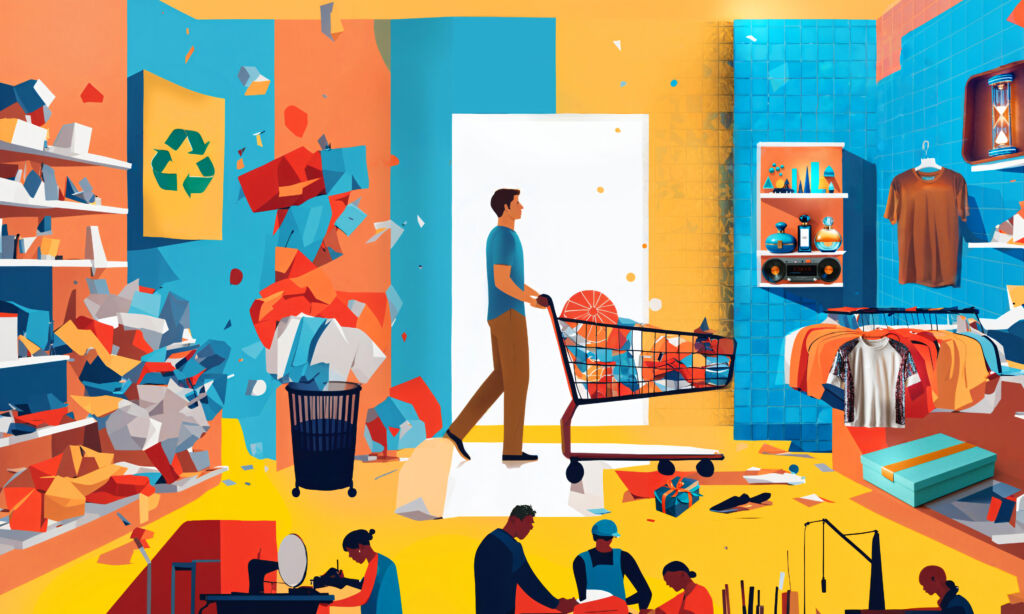Second-hand – A New, Growing Industry or a Disruptor of the Textile Industry?


What on earth is happening next in the world of fashion? Second-hand is growing, but at the same time, it’s competing with ultra-fast fashion for market share. Or are they even competing for the same market? Both are usually affordable, but the values behind purchasing decisions seem quite different. These extremes indicate that radical changes are happening in the textile industry. Is second-hand a new market that competes with the traditional textile industry? Or is it a force that will change the entire textile industry?
In our studies on the circular economy, we explored the views of some second-hand operators and clothing brands on understanding consumers in the second-hand market. The objective of the interviews was to identify useful research topics through interviews that would promote the circular economy. All the interviewees saw changes coming to the second-hand market. For brand operators, it was clear that they need to be part of this market and that it will play a significant role in their future business. However, at the moment, developing this market takes up more resources than their business priorities can support.
For charity organizations, the changing market means new competitors operating with different assumptions and business models. Charities have strengths that brands don’t, such as expertise in efficient sorting and customized pricing. Sorting is the weak link in second-hand profitability because each second-hand garment requires a labor to assess, sort, and price that one item. Without an efficient process, the costs becomes unreasonable and significantly increases the product’s price.
And what about the consumer? The interviewees identified several motivations for buying second-hand, such as treasure hunting, saving money, following trends, environmental values, or getting better quality for a lower price. Younger people were recognized as more interested in second-hand. Not everyone is ready to buy used clothes yet. However, many who take the plunge and make their first second-hand purchase come back for more, meaning the repeat purchase rate is very high. One of the interviewees said that we get the consumers to try se second-hand for the first time, 80% of these consumers will return and buy again. So, it’s essential to encourage new users to try used products, as that is the biggest hurdle to overcome. Various stakeholders also saw the need to better understand consumers. They were interested in factors that motivate and enable consumers to make that first purchase.
Brand operators wondered what consumers expect from brands in relation to second-hand. Do they want brand-name products to be bought used directly from the brand’s stores, and does second-hand shopping offer some sort of moral pass for buying new items? Or maybe it even increases the brand’s value in the consumer’s eyes?
The Core Question: Understanding Value
The biggest problem for second-hand might be the declining quality and low price points of the textiles currently produced and purchased by consumers. A low-quality product doesn’t work in a circular economy; its resale value is poor, and its worth drops too low. Very cheap products aren’t profitable in the second-hand market because there’s no margin left after the labor-intensive process. Not to mention that a new ultra-fast fashion item is often cheaper than a second-hand one, so fast fashion wins the price competition.
The core question is how consumers understand and value the quality of products. For some, quality equals a specific brand; for others, it’s about materials. These concepts mean different things to different people. To one, silk signifies quality; to another, quality might mean an expensive brand, even if the material used was synthetic. How can we promote the idea of quality and get consumers to value high-quality materials with longer lifespans and high reuse potential? Many luxury buyers already consider resale value, assuming the textile is of high quality. What would it take for this thinking to expand to everyday clothing? How can we promote quality thinking to support the long-term use of textiles? We see these as the most important questions that could advance the circular economy in textiles.
Based on our interviews, it seems that second-hand and traditional textile industries are merging and will experience many transformations in the future. Those who see these as part of the same value chain will find new ways to operate. Some know how to handle individual pieces efficiently, others know how to brand. Perhaps there will be collaboration opportunities within the value chain, where everyone can leverage their strengths and create new value for both consumers and businesses within the chain. We hope the outcome will be a renewed textile industry aligned with the circular economy, significantly reducing its environmental footprint.
Katriina Virtanen & Milla Noras
Sustainable Circular Economy Master students at Turku UAS
_________________________________________________________________________
These materials were created in the Baltic2Hand project which is an Interreg Central Baltic Programme 2021–2027 project that is co-funded by the European Union. Read more about the Baltic2Hand project.
